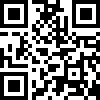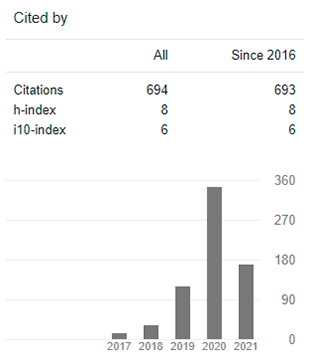Adolescents from Pujilí: Internet addiction and its impact on school behavioral adaptation
Adolescentes de Pujilí: Adicción al internet y su impacto en la adaptación conductual escolar
DOI:
https://doi.org/10.29394/Scientific.issn.2542-2987.2024.9.31.14.296-317Keywords:
addiction, social adaptation, adolescent, internet, behaviorAbstract
This study examines the relationship between internet addiction and behavioral adaptation in Ecuadorian adolescents. A non-experimental quantitative approach was used with a sample of 205 basic education students. The Behavior Adaptation Inventory (IAC) and the Lima Internet Addiction Scale (EAIL) were applied. Results reveal that 75.6% of participants exhibit a mild level of internet addiction, while behavioral adaptation shows high levels in educational (100.00%) and personal (64.88%) areas. However, the family area presents the lowest levels of adaptation (36.10%). A significant negative correlation was found between internet addiction and all dimensions of behavioral adaptation, indicating that higher addiction is associated with lower adaptation. The high possession of electronic devices among adolescents and their use primarily for leisure stands out. These findings underscore the need for educational strategies that promote balanced internet use and strengthen family relationships, thus contributing to the healthy psychosocial development of adolescents in the digital era.
Downloads
References
Amoroso, M. (2018a,b,c). Adicción a las redes sociales y su relación con la adaptación conductual en los adolescentes de bachillerato. Estudio realizado en la Unidad Educativa César Dávila Andrade. Trabajo de Graduación. Cuenca, Ecuador: Universidad del Azuay.
Andrade, L., Carbonell, X., & López, V. (2019). Variables sociodemográficas y uso problemático de videojuegos en adolescentes ecuatorianos. Health and Addictions/Salud y Drogas, 19(1), 1-10, e-ISSN: 1988-205X. Recuperado de: https://doi.org/10.21134/haaj.v19i1.391
Aponte, D., Castillo, P., & González, J. (2017). Prevalencia de adicción a internet y su relación con disfunción familiar en adolescentes. Revista Clínica de Medicina de Familia, 10(3), 179-186, e-ISSN: 2386-8201. España: Sociedad Española de Medicina de Familia y Comunitaria.
Atoum, A., & Wasffi, L. (2015). Internet Addiction and its Relation to Psychosocial Adaptation among Jordanian High Basic Stage Students, Journal of Psychology and Behavioral Science, 3(1), 96-104, e-ISSN: 2374-2380. United States: American Research Institute for Policy Development.
Ávila, D., Pardo, E., & Muñoz, M. (2018a,b). Escala de Adicción al Internet de Lima (EAIL): Análisis Psicométrico. RIP. Revista Iberoamericana de Psicología, 11(3), 99-108, e-ISSN: 2500-6517. Colombia: Sello Editorial IberAm de la Corporación Universitaria Iberoamericana.
Calderón, M., & Valenzuela, C. (2022). Publicación: Análisis del nivel de adaptación de conducta en estudiantes de bachillerato general unificado de la Unidad Educativa “República del Ecuador”, en el año 2021. Trabajo de Titulación. Quito, Ecuador: Repositorio Institucional de la Universidad Central del Ecuador.
Caro, M. (2017a,b). Adicciones tecnológicas: ¿Enfermedad o conducta adaptativa?. MediSur, 15(2), 251-260, e-ISSN: 1727-897X. Cuba: Universidad de Ciencias Médicas de Cienfuegos.
Centeno, J., & Toro, G. (2015). Conducta adaptativa y modelo parental en niños del centro educativo especial N° 35001 de San Cristóbal, Huancavelica - 2014. Tesis. Perú: Universidad Nacional de Huancavelica.
De la Cruz, M., & Cordero, A. (2015a,b). IAC. Inventario de Adaptación de Conducta. 7ma edición, revisada y ampliada, ISBN: 978-84-16231-19-5. Madrid, España: IAC. Inventario de Adaptación de Conducta.
Díaz, S., Arrieta, K., & Simancas-Pallares, M. (2019a,b). Adicción a internet y rendimiento académico de estudiantes de Odontología. Revista Colombiana de Psiquiatría, 48(4), 198-207, e-ISSN: 0034-7450. Recuperado de: https://doi.org/10.1016/j.rcp.2018.03.002
Eimani, M., & Shirali, K. (2015). The Role of Family Functions and Process on Internet Addiction among Teenagers. Journal of Family Counseling & Psychotherapy, 5(2), 143-164, e-ISSN: 2588-3542. Iran: University of Kurdistan.
Figueroa, E., Morales, K., & Morales, M. (2021). Repercusiones conductuales y emocionales del confinamiento ocasionado por el Covid 19 en estudiantes de edades entre 7 y 10 años del Colegio Senderos del Sector de Pilarica de la Ciudad de Medellín. Trabajo de grado. Medellín, Colombia: Tecnológico de Antioquia, Institución Universitaria.
Hernández, R., Fernández, C., & Baptista, M. (2014). Metodología de la Investigación. Sexta edición, ISBN: 978-1-4562-2396-0. México: McGraw-Hill / Interamericana Editores, S.A. de C.V.
Huaman, L. (2021). Adaptación de conducta en estudiantes de 4° de secundaria en el colegio Capitán Alipio Ponce Vásquez de San Juan de Lurigancho. Trabajo de suficiencia profesional. Perú: Universidad Inca Garcilaso de la Vega.
Kim, Y., Kim, D., & Choi, J. (2017). The cognitive dysregulation of Internet addiction and its neurobiological correlates. Frontiers In Bioscience, Elite, 9(2), 307-320, e-ISSN: 1945-0508. Recovered from: https://doi.org/10.2741/e804
Li, J., Chen, Y., Lu, J., Li, W., & Yu, C. (2021). Self-Control, Consideration of Future Consequences, and Internet Addiction among Chinese Adolescents: The Moderating Effect of Deviant Peer Affiliation. International Journal of Environmental Research and Public Health, 18(17), 1-10, e-ISSN: 1660-4601. Recovered from: https://doi.org/10.3390/ijerph18179026
López-de-Ayala, M., Vizcaíno-Laorga, R., & Montes-Vozmediano, M. (2020). Hábitos y actitudes de los jóvenes ante las redes sociales: influencia del sexo, edad y clase social. Profesional de la Información, 29(6), 1-13, e-ISSN: 1699-2407. Recuperado de: https://doi.org/10.3145/epi.2020.nov.04
Lugo-Salazar, K., & Pineda-García, G. (2021). Escala de Adicción a Internet de Lima: Propiedades psicométricas con adolescentes mexicanos. Revista de Psicología Clínica con Niños y Adolescentes, 8(2), 23-28, e-ISSN: 2340-8340. España: Departamento de Psicología de la Salud, Aitana Investigación.
Murciano-Hueso, A., Gutiérrez-Pérez, B., Martín-Lucas, J., & Huete, A. (2022). Juventud onlife. Estudio sobre el perfil de uso y comportamiento de los jóvenes a través de las pantallas. Relieve. Revista Electrónica de Investigación y Evaluación Educativa, 28(2), 1-17, e-ISSN: 1134-4032. Recuperado de: https://doi.org/10.30827/relieve.v28i2.26158
NIH (2023). Behavior, Addictive. United States: National Library of Medicine.
Oliva, I. (2002). Calidad de Servicio, Más Allá de una Buena Atención. Revista Economía & Administración. Chile: Universidad de Chile.
Pinargote-Baque, K., & Cevallos-Cedeño, A. (2020). El uso y abuso de las nuevas tecnologías en el área educativa. Dominio de las Ciencias, 6(3), 517-532, e-ISSN: 2477-8818. Ecuador: Polo de Capacitación, Investigación y Publicación (POCAIP).
Rial, A., Golpe, S., Gómez, P., & Barreiro, C. (2015). Variables asociadas al uso problemático de Internet entre adolescentes. Health and Addictions/Salud y Drogas, 15(1), 25-38, e-ISSN: 1988-205X. Recuperado de: https://doi.org/10.21134/haaj.v15i1.223
Small, G., Lee, J., Kaufman, A., Jalil, J., Siddarth, P., Gaddipati, H., Moody, T., & Bookheimer, S. (2020a,b). Brain health consequences of digital technology use. Dialogues in Clinical Neuroscience, 22(2), 179-187, e-ISSN: 1958-5969. Recovered from: https://doi.org/10.31887/DCNS.2020.22.2/gsmall
Tassé, M., Luckasson, R., & Schalock, R. (2016). The Relation Between Intellectual Functioning and Adaptive Behavior in the Diagnosis of Intellectual Disability. Intellectual and Developmental Disabilities, 54(6), 381-390, e-ISSN: 1934-9491. Recovered from: https://doi.org/10.1352/1934-9556-54.6.381
Tserkovnikova, N., Shchipanova, D., Uskova, B., Puzyrev, V., & Fedotovskih, O. (2016). Psychological Aspects of Internet Addiction of Teenagers. International Journal of Environmental & Science Education, 11(16), 8846-8857, e-ISSN: 1306-3065. Turkey: Ankara. Akpar parça sanayi.
Yang, J., Guo, Y., Du, X., Jiang, Y., Wang, W., Xiao, D., Wang, T., Lu, C., & Guo, L. (2018). Association between Problematic Internet Use and Sleep Disturbance among Adolescents: The Role of the Child’s Sex. International Journal of Environmental Research and Public Health, 15(12), 1-9, e-ISSN: 1660-4601. Recovered from: https://doi.org/10.3390/ijerph15122682
Downloads
Published
How to Cite
Issue
Section
License
Copyright (c) 2024 INDTEC, C.A.

This work is licensed under a Creative Commons Attribution-NonCommercial-ShareAlike 4.0 International License.
The content of the journals of this site, are under a Creative Commons Attribution-Noncommercial-Share Alike 4.0 International License.














